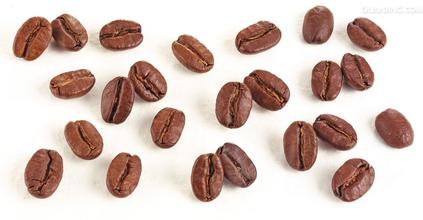Introduction to the characteristics of grindability of slightly sour Salvadoran Himalayan coffee varieties in producing areas
Coffee fields are endless, and most of them are harvested mechanically to meet economic benefits. When 75% of the coffee fruit in the coffee garden turns red, the mechanical harvesting is started, followed by the same pre-operation of washing, which is transferred to the sink to remove the floating beans, sifting out the sunk beans, and then using a large pulp sifter to remove the pulp and remove the pods covered with pectin. The next stage is separate from the washing method: instead of moving the sticky pods to a tank for fermentation, they are moved to an outdoor drying field. Due to the dry climate in Brazil, the sticky pectin on the pods hardens in about a day. Then use a lot of manpower to turn up and down, so that the pod evenly dry inside and outside, so as not to regain moisture and stink, about two to three days with the help of sunlight and dry climate natural forces, the pod can reach a certain degree of dehydration. Then further drying in a dryer to reduce the moisture content to 10.5- 12%, storing the pods in special containers for about ten days, further ripening to stabilize the quality, grinding off the sheepskin (i.e. pods) before export, taking out the coffee beans, and packaging them in grades
Salvadoran fine coffee is concentrated in Santa Ana in the west and Charantan Nango volcanic rock producing areas in the northwest. In recent years, almost all of the top 10 cup tests come from these two producing areas, with an altitude of about 900-1500 meters. Bourbon is the main one (accounting for 68%), followed by Pacas (accounting for 29%), and mixed Pacamara, Duraai and Cadura only account for 3%.
The coffee harvest lasts from November to March. All are hand-picked to harvest fresh coffee.
Generally speaking, Salvadoran coffee inherits the mild quality of Central American coffee, which is soft, slightly sour and has a good sweetness. At the same time, it has its own characteristics: aromatic taste slightly sour, very soft; pure without impurities, taste balance is excellent; smooth feeling like cream chocolate is impressive; coffee in the mouth that kind of dense feeling makes coffee have a deep taste, long aftertaste.
Country: El Salvador
[Manor]: Himalayan Manor
Location: Santa Ana
[Altitude]: 1580~ 1720m
[Treatment method]: Half sun
[Variety]: Red Bourbon, Iron Picard
[Plant]: El Divisadero
Flavor: Plum, brown sugar, red wine acid

Important Notice :
前街咖啡 FrontStreet Coffee has moved to new addredd:
FrontStreet Coffee Address: 315,Donghua East Road,GuangZhou
Tel:020 38364473
- Prev

Introduction to the price of taste treatment in the producing area of Panamanian Cupid coffee
In the Pokuit producing area, there are also many excellent manors, except the famous Emerald Manor, Alida Manor, Aqaba Manor and so on, all of which produce high-quality boutique coffee. This is not only due to the superior ecological conditions of the Pokuit region of Panama and the fertile volcanic ash soil of the Baru volcanic land. Another important factor is that in Bana
- Next

Introduction to the taste and price of varieties with the characteristics of the flavor description treatment of sun-tanned Yega Shifeiwaka coffee
Yega Xuefei uses the oldest sun treatment method, but in 1972, Ethiopia introduced Central and South American water washing technology to improve its quality, which made its jasmine and citrus fragrance clearer and more refined, and became one of the best beans in the world. Superb washing technology played an important role. After the 1970s, it was basically washed by water. However, in the past two years, Yega Snow has been out of order.
Related
- Detailed explanation of Jadeite planting Land in Panamanian Jadeite Manor introduction to the grading system of Jadeite competitive bidding, Red bid, Green bid and Rose Summer
- Story of Coffee planting in Brenka region of Costa Rica Stonehenge Manor anaerobic heavy honey treatment of flavor mouth
- What's on the barrel of Blue Mountain Coffee beans?
- Can American coffee also pull flowers? How to use hot American style to pull out a good-looking pattern?
- Can you make a cold extract with coffee beans? What is the right proportion for cold-extracted coffee formula?
- Indonesian PWN Gold Mandrine Coffee Origin Features Flavor How to Chong? Mandolin coffee is American.
- A brief introduction to the flavor characteristics of Brazilian yellow bourbon coffee beans
- What is the effect of different water quality on the flavor of cold-extracted coffee? What kind of water is best for brewing coffee?
- Why do you think of Rose Summer whenever you mention Panamanian coffee?
- Introduction to the characteristics of authentic blue mountain coffee bean producing areas? What is the CIB Coffee Authority in Jamaica?

